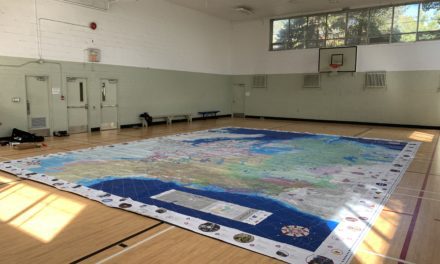 How often have we stood in front of our students and said “Don’t be shy to speak up if you don’t understand” or better yet “Ask questions, that’s what I’m here for”? I know I’ve spoken my share of those words in a classroom.
How often have we stood in front of our students and said “Don’t be shy to speak up if you don’t understand” or better yet “Ask questions, that’s what I’m here for”? I know I’ve spoken my share of those words in a classroom.
How about when students have to present a project or do a presentation and they give some excuse about how they forgot material at home or their USB key isn’t working? I know that frequently my answer was “You should have had an alternate plan in the event that something such as this occurred”.
What about “You shouldn’t be afraid to try new things, take a chance, don’t be shy”? I’ve uttered those words in some way, shape or form at some point as well.
It was only a few weeks ago when I began teaching students in a Science and Technology course online. Wow! Talk about a path to self-discovery. I was terrified. How would I deal with classroom management when I wasn’t present in a real classroom? What about a blackboard and chalk? I would always complain about how dry and dusty chalk would make my hands and now I was experiencing withdrawal! What about the technology glitches? What would happen if I couldn’t access my slides or if there was some sort of problem with my headset? The list went on and on. I am here, still alive to talk about it today though.
This experience led me to question what educators really fear when it comes to using technology in the classroom or in my case, technology as the classroom. Are we being hypocrites when we tell our students not to be shy to ask for help when we are afraid to ask for help with using technology in the classroom? As teachers, we know that something may not work right off the bat. What do we do? We have a plan B, just in case. So our fear of experiencing problems with technology, couldn’t we have a plan B as well? I’m sure some of you skeptics are nodding and rolling your eyes. I probably would be too and by no means am I an expert but change is taking place now. Let’s embrace it instead of fearing it! Easier said than done, I know. Change is something that happens slowly and taking baby steps is easier than taking a giant leap forward. With each small step, confidence will build. Isn’t that something that we as educators try to instill in our students? Isn’t that the whole point of life-long learning?
Educators are beacons that guide and steer. We encourage our students to take risks in order to learn more effectively. Perhaps we should learn from the objectives and standards we set for our students.
Here are a few inspirational clips that have helped me in my journey:
What are you doing to embrace educational change in the form of technology?
Alessandra Pasteris
Pedagogical Consultant and Online Teacher
LEARN





Alex, this makes me think of how scared I was to use Zen this year, after becoming so used to Wimba. I can’t say I embraced it! But what I noticed was how comfortable the kids seemed to be with it, and that spilled over onto me, and soon I found myself back in the comfort zone! I think most of us flinch when our comfort zone is breached, but in the end, we grow when we change. That’s what most teachers who shun technology don’t realize, I think – that even those of us who seem to be high up on the tech ladder had to start somewhere, and there is no going back now.
You guys at LEARN do a fantastic job. I know we don’t see all the positive results immediately – mostly because as professionals, we’re more likely to see our own faults weaknesses, and want to correct those. Having been involved in virtual classrooms for several years now, I can honestly say that the results for our students are out of this world – well, at least out of this province, and probably outside of most Canadian student’s experience. Give them the tools , teach them the basics, and they will learn far more than what’s in the curriculum or what can be measured by rubrics. These kids will be leaders in their world because they have been equipped to be just that.
Keep up the good work! 🙂